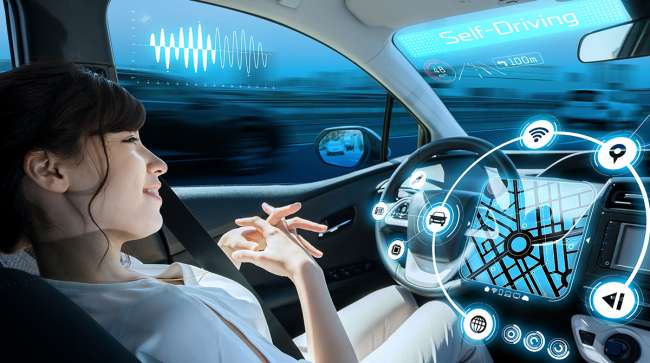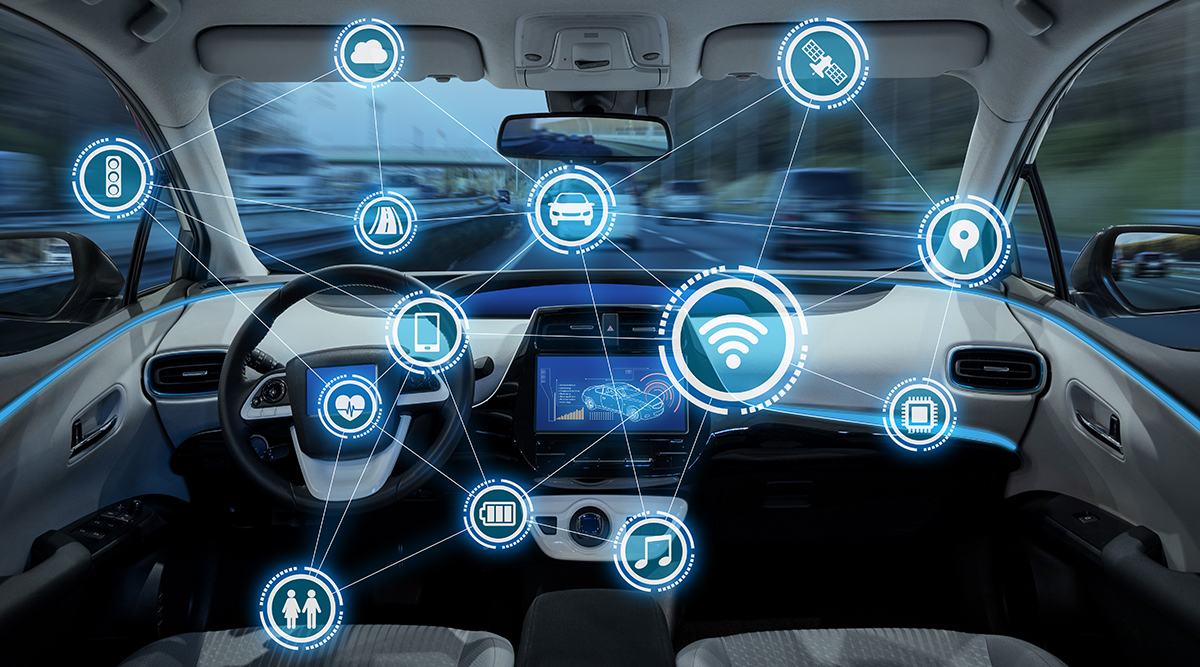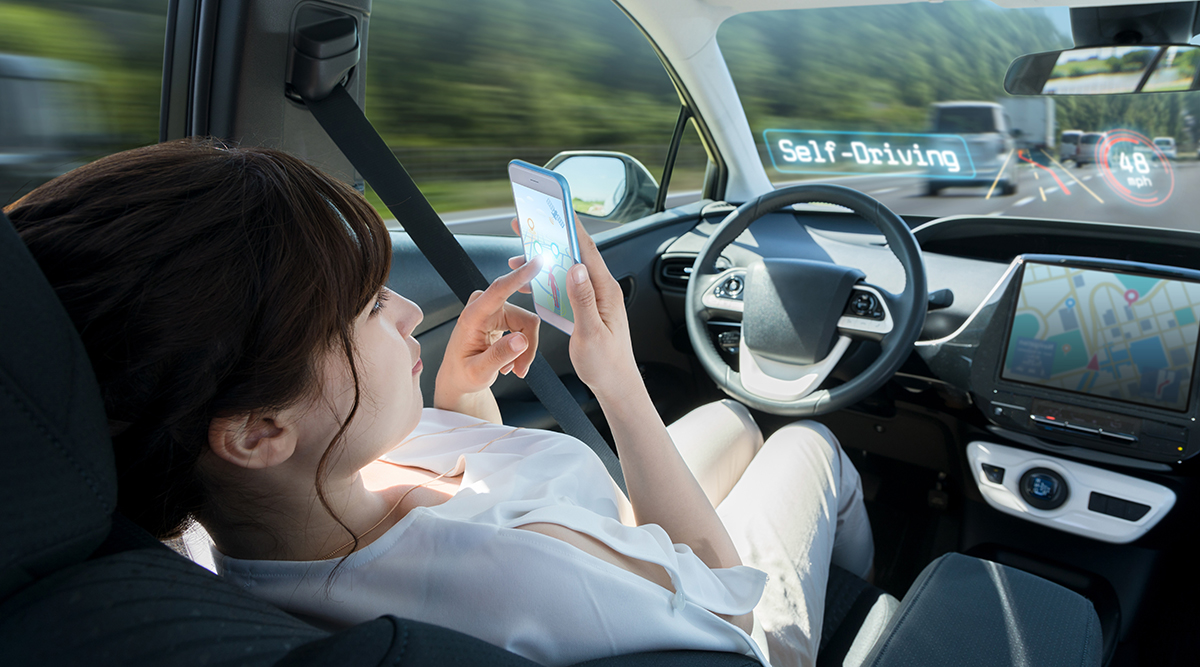How Cities in the San Francisco Bay Area Are Paving the Way for Our Autonomous Car Future

SAN FRANCISCO — Within two to three years, bicyclists in Emeryville and Los Gatos will be able to download an app to get more green lights at intersections. Patients at the Veterans Administration Palo Alto Medical Center will be hopping on an autonomous shuttle for appointments. And, within a few more years, BART riders in Dublin will have a driverless vehicle picking them up and dropping them off at the station.
It’s all part of an effort to prepare the Bay Area for a future with self-driving cars, said Robert Rich, a planner at the Metropolitan Transportation Commission (MTC), the region’s transportation planning agency. When that future comes, cars will be expected to communicate not just with each other, but also with traffic signals and other infrastructure, he said.
And that’s where the MTC comes in. On Feb. 14, an MTC committee approved $5 million in grants for six cities to embark on pilot programs aimed at not only the driverless future, but also at solving real-world traffic problems now. The full commission is expected to formally award the grants on Feb. 28.

Getty Images
“We were looking for more hands-on knowledge of both how connected and autonomous technology would work together,” Rich said. “We wanted to see how ready this technology was, how it could work and how much it costs, and see if it could tackle some short-term challenges, as well.”
In Emeryville, traffic engineer Ryan O’Connell expects a three-phase approach. The city will first install upgraded traffic signals to collect large amounts of data to help the flow of traffic at 15 intersections on 40th, Shellmound and Powell streets. Then, the city will work with transit agencies to install GPS technology at the signals for public transit, which now rely on infrared.
Finally, using the same GPS technology, O’Connell said the city will deploy an app for cyclists that tells the signals to stay green longer when they approach an intersection. The apps will be able to differentiate between a bicycle and car based on speed.

Getty Images
The idea, O’Connell said, is to encourage modes of transportation other than cars. And, since Emeryville sits on the Bay Trail, it will help the flow of cyclists on weekends, when they traverse the corridor in large numbers.
“That would really help the weekend riders coming through here to get more green time and fewer delays,” he said, adding that he also expects it will help during the weekday commute. “Whenever we’re promoting health benefits, we’re also promoting (reduced) emissions benefits and helping get people out of their cars.”
In Palo Alto, a team comprised of the Santa Clara Valley Transportation Authority (VTA), the Mineta Transportation Institute and the VA hospital are working to develop the world’s first autonomous vehicle that is also accessible to passengers who are blind, use wheelchairs or otherwise need assistance getting around.
The VTA has been watching the advent of autonomous vehicles with great interest, said Gary Miskell, the agency’s chief information and technology officer. But there was one problem, he said. The autonomous vehicles being developed weren’t accessible to everyone.

Getty Images
“We needed a way to escalate or bring this issue up to the surface and get the autonomous vehicle manufacturers to think more about accessibility,” Miskell said. “It’s just as important for the vehicle.”
But, making an electric, automated vehicle that meets the Americans with Disabilities Act is no small feat. The first phase of the project will be to work with an autonomous vehicle manufacturer on how to develop such a vehicle, including adding features that automate securing wheelchairs, so they don’t move around during the ride, or a video screen that uses sign language as well as speaking instructions and facetimes a customer service representative in case there’s a problem that needs human intervention.
Then, Miskell says the team will begin testing the shuttle, first at a private facility and later, at the VA’s medical center in Palo Alto, where it will pick up patients from bus stops and cart them throughout the campus. Ultimately, the shuttle will be deployed in other locations around the South Bay, including, possibly, the San Jose airport or downtown San Jose, Miskell said. Not only is the shuttle expected to boost transit use, but Miskell said it will help reduce greenhouse gas emissions, as well.
“The project is really trying to explore how automated, accessible vehicles can be incorporated into public transit,” he said. “Public transit has to be accessible. That really is critical.”
Other Metropolitan Transportation Commission grant recipients. Each project is subject to change and refinement:
• Walnut Creek: The city plans to upgrade traffic signals and outfit buses with connected vehicle technology. The lights will stay green longer for the buses, based on how many people are on the bus and whether it is on time or delayed.
• Dublin: The Livermore Amador Valley Transit Authority, along with the city of Dublin, will begin testing a driverless shuttle on city streets. Ultimately, the goal is to use the shuttle to carry people between the BART station and a future job center near Arnold Road. The city will be looking to see if the shuttle helps promote transit use, improves the overall mobility around the route and reduces greenhouse gas emissions.
• Los Gatos: Similar to the Emeryville pilot, Los Gatos plans to first upgrade its traffic signals to improve the flow of traffic and then deploy an app that detects when cyclists using the app are present, giving them longer green lights.
• Contra Costa County: The Contra Costa Transportation Authority plans to upgrade its traffic signals to improve the flow of traffic and deploy an app that recommends a speed for buses to increase the number of green lights it hits. It also plans to deploy an app for passengers to make connections to BART more reliable.
Distributed by Tribune Content Agency, LLC




